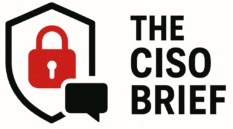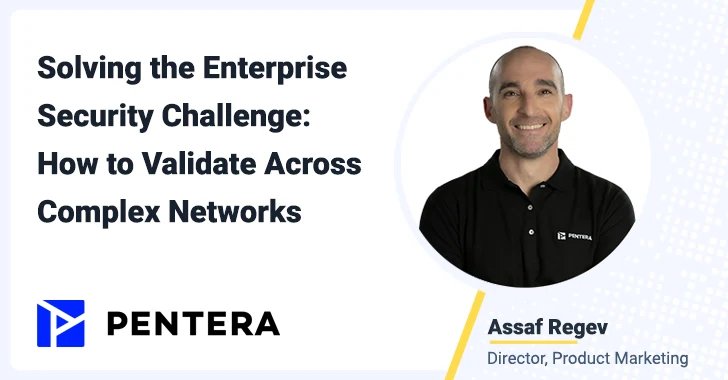
With thousands of endpoints, cloud instances, remote users, and third-party integrations, securing the enterprise has become a massive target. Each change in the IT environment – whether driven by digital transformation, M&A activity, or routine system updates – creates new opportunities for adversaries to leverage. Yet, the network is the backbone of business operations. It must always be available to support production, collaboration, and growth.
In this article, we’ll explore the specific challenges large enterprises face when validating their security posture and how leading security teams are evolving their testing strategies to match the scale, speed, and sophistication of large, multi-faceted IT networks.
The Challenges of Validating Enterprise Network Security
Enormous attack surface – In large enterprises, the attack surface spans countless assets across on-prem, cloud, and hybrid environments, making comprehensive security validation incredibly complex. According to the 2025 State of Pentesting Survey report, enterprises face breaches across the entire attack surface, with attacks targeting everything from web-facing assets (30%) to APIs (21%), IoT devices (21%), internal networks, and OT systems. Given the varying attack surfaces, testing is often fragmented, with different teams using inconsistent tools and standards, leaving gaps in risk visibility, making it difficult to establish a unified security posture across the organization.
Myopic view – The complexity of enterprise networks makes it difficult to visualize how a full attack sequence could unfold. Most simulation tools focus on a narrow and prescribed threat path; either the initial point of entry or how a specific TTP might be applied. While valuable, it’s still a limited perspective when what’s needed is end-to-end visibility across the entire attack surface, showing both where you’re exposed and the downstream impact of those exposures.
Inoperable data – Enterprises using 76–100 tools face an average of 2,048 alerts per week, according to the pentesting survey report, rising to 3,074 for those with over 101 tools. Teams are often left with overwhelming data dumps that lack the context needed to prioritize fixes. Without context on what to address first, the path toward mitigation is unclear, leaving security teams uncertain of where to focus their efforts toward reducing risk.
Test coordination – As IT is the engine that powers day-to-day business operations, testing must be carefully timed to avoid disruption. Different parts of the environment often need to be tested at conflicting times, for different purposes—whether for compliance audits, M&A due diligence, or routine checks. Pentesting methods that are hard to scale, whether because they require installation of software agents, are too manual, or offer only limited configuration and coordination capabilities, typically cause tests to be delayed or limited.
Let’s explore how each of these challenges are addressed by security validation solutions that are truly enterprise-ready.
Enterprise–Wide Security Validation with Distributed Attack Orchestration
Distributed attack orchestration enables enterprises to test simultaneously across remote sites and fragmented environments. To enable this, you need a network of execution nodes – whether persistent or ephemeral – to reach different sites and segments in the IT environment, and the ability to orchestrate test activities across these nodes, ideally from one central hub. This flexible architecture allows simultaneous testing across data centers and global locations, helping to achieve a consistent testing standard.

Breadth and Depth of Security Validation
Combining distributed attack orchestration with full kill-chain emulation provides an unparalleled view of enterprise exposure that few security validation tools offer. This method validates the entire adversarial path, from initial access to lateral movement and privilege escalation, and in the process spans every layer of the environment – on-prem, cloud, external surface, etc. The combination of both raises the suitability of security validation tools to meet the needs of the Enterprise by enabling security teams to uncover how attacks could progress in unmatched breadth and depth across the network.
Actionable Insights with the Aid of AI-Based Reporting
Helping enterprises to highlight recurring weaknesses, emerging risks, and key areas for improvement, security validation platforms use AI to analyze current and historical data to provide visibility into security posture trends and highlight remediation priorities. Aggregating test results, these insights translate into clear, actionable guidance for technical teams and high-level summaries for executives. In large-scale enterprise environments, with multiple sites and business units, AI helps identify and communicate key trends across test findings and guide stakeholders toward the most impactful remediation efforts.

Flexible Testing Operations with Centralized Management
As security validation expands across enterprise environments, a centralized management hub is critical to maintaining control and operational efficiency. It overcomes the challenge of fragmented testing with a unified interface that allows teams to run and manage tests concurrently across multiple locations. Tests can be paused, resumed, or extended, while new credentials can be added in runtime, addressing the agility needed for dynamic environments.

A New Era in Enterprise Security Validation
With advanced capabilities like distributed attack orchestration, full kill-chain emulation, AI-driven insights, and centralized management, Pentera emerges as the market leader of security validation platforms. These capabilities empower enterprises to test the cybersecurity controls against the latest cyber attacks and meet the demands of complex, large-scale IT environments. Leveraging our distributed attack orchestration, Enterprises can test their disparate security environment in parallel, across hundreds of thousands of endpoints. Getting the necessary data to guide remediation and effectively reduce exposure.
Assaf Regev — Director, Product Marketing at Pentera
https://blogger.googleusercontent.com/img/b/R29vZ2xl/AVvXsEhyzm3bsnE-pnE8A4iCI2BEn6FTlc0kfnA3EFVTQ2TJip3R_8aiydWQ6WEQxBwc_W9ToOFTvPOcWlS9-gAd2fR0xB48Tc5TFubdvtnL9BuJ2QxoNI3HH1Gx7ngniT0dcPwYK4DVY9AqmxJS7JSdyHxR-uodLht6xNgBFaD_tV84zLwpgl2XckmNPSxu4ig/s728-rw-e365/assaf.png

